Teach Us to Sit Still Read online
Page 12
If anyone needed to move on, it was me.
Some nights I became extremely agitated. Breathing softly beside me, my wife had never seemed more distant, more healthy. I was becoming withdrawn. I was losing interest in intimacy. How many lunches and dinners had I cancelled because I found it uncomfortable sitting down? People were accusing me of being aloof. I found it hard to explain myself. There was a crucial part of my life that couldn’t be talked about, except by allusion, perhaps, in my novels. My characters were also growing manic and withdrawn. Inexplicably Harold Cleaver abandons his whirlwind life to retreat to mountain solitude. Inexplicably Albert James withdraws into idiosyncrasy and death wish. These stories didn’t quite satisfy. Or at least, they didn’t satisfy me. They didn’t really say it. Nothing could.
In bed, my leg twitched. I couldn’t sleep. There. A nerve just above the knee. And now I felt thirsty. I needed water. My father, I remembered, had always had a thing about air, fresh air. Whenever he got out into the country he would go through a rather cranky routine of deep breathing and sighing and saying how wonderful the fresh air was. Perhaps he felt constricted in his ecclesiastical life. My father had wanted to be a missionary in Africa or Asia and ended up suffocating in the stale air of an ugly, fake-Gothic suburban church. ‘Ah! Fresh air at last!’ he would exclaim, when we got out of the train at some holiday destination. ‘How marvellous! Sea air! Mountain air!’ We made fun of him. And he died of lung cancer, choked to death, having never smoked. ‘Breathe on me, breath of life’, he loved that hymn. Would I die dried out in some way, I wondered? Bereft of water, in the low tide of my dreams? I had started to drink a lot during the night. Every time I went to the bathroom I needed a gulp of water. From the tap. That was new. My mouth was always dry.
Is this what Dr Wise means by catastrophic thinking?
Maybe you should have had the operation after all, I thought then. Maybe the hospital doctors were absolutely right. Anderson and Wise were not urologists. Wise was a psychotherapist and Anderson a neurologist. What did they know? Carlo was a good man, a trained urologist, who saw dozens of patients like me every day. I couldn’t believe he and his colleagues were operating on people unnecessarily. It was your foolish pride stopped you doing it, I told myself. Some kind of mad male vanity about the integrity of your wedding tackle. To what end, if we never make love? And it was pride stopped me asking my mother to try faith healing. Give it a whirl. Why not? Stoop!
But how can you, I wondered – and again I was furious with myself – how can you hold such different interpretations of your situation simultaneously? How could I think I’d got it wrong about TURP and about faith-healing? ‘This is a problem you will never overcome, Mr Parks, until you confront the profound contradiction in your character!’
‘Un gatto è salito a bordo.’
The voice spoke, abruptly, from beyond the wall. A cat has climbed on board. I was going nuts. The truth is we know nothing about our bodies, I thought. Nothing. What’s in there, what’s going on? Each research paper contradicts the next. Every discipline is scathing of the others. A second opinion. A third. The web is an ocean of confusion. Above all, every story told in words, every medical story in particular, is always a thousand times clearer than reality. However unhappy, narrative is, of its very nature, reassuring, gives the illusion of knowing, when all anyone ever really knows is how he’s feeling now, now, now and now, in this instant.
I was feeling terrible.
I got up, went to the bathroom and took three milligrams of benzodiazepine.
That will sound easy enough but in Italy this drug is mainly distributed in drop form under the product name Lexotan. Ten drops per milligram. In the dead of night every drop took an age to fall from the small brown bottle glinting in the light above the bathroom mirror and down into the battered tooth glass. Thirty times I watched the drops form. Even slower than my peeing.
Thirty times.
The effect was hypnotic. But I mustn’t look away or I’d lose count. And all the time my hand trembled as it held the bottle. You are old old old, I told myself. Older than the waterseller.
Catastrophic thinking.
I tapped the bottom of the bottle. Hurry up! Hurry up! The drop quivered but wouldn’t fall.
Twenty-one – pause – tremble – twenty-two – pause – tremble.
Why does it have to be so achingly, achingly slow?
To discourage suicide. With Lexotan, you’d die of boredom before killing yourself.
Back in bed I reflected that maybe I was trying to make something serious happen with this insomnia. I had begun to envy people who were indisputably ill. I wanted to be seriously, seriously ill myself, so that people could see my condition and it would all be out in the open and someone would finally have to do something.
Eventually, a narcotic calm stole over me. It was a huge pleasure, like sliding into a warm bath. Then I slept for four solid hours. That was longer, I realised on waking, than any other sleep for a year and more.
Thank you, benzodiazepine. Thank you, pharmaceutical research.
The one drawback was that if you used the drug three nights in a row the effect wore off. But not the morning drowsiness. To each night, then, its elusive antidote.
PART TWO
Be Silent, Oh All Flesh
ONE LATE AFTERNOON in June, I closed a door, placed two pillows under my knees, lay back and took a deep breath. I had a book in my hand. It was open at the heading: Respiratory Sinus Arrhythmia breathing in preparation for Paradoxical Relaxation.
Daunting.
It was a strange book I had pulled out of its mail-order cardboard a couple of days before. On the net it had seemed the cover was simply the cumbersome title writ large. Now I saw that the brownish background behind the words was actually a faded reproduction of a Renaissance painting – something famous I’d seen before but couldn’t recall where – showing a seated saint with a splendid beard immersed in a book. At the reader’s shoulder, apparently equally interested in what was written there, were two blond cherubs.
What on earth had possessed the good doctors to front their ideas with such an image? Were you supposed to assume a parallel between the book in your hand and the tome the saint was reading, presumably holy, perhaps even the Bible? Was this why the orange sticker declaring ‘A NEW REVISED 3RD EDITION’ was placed right beneath the ancient book?
Surely even the most ambitious authors wouldn’t claim as much.
Or were Wise and Anderson suggesting that this was precisely the kind of man who typified the headache in the pelvis: an avid, elderly reader with bad posture and rounded shoulders? It wasn’t easy to see what the saint was sitting on, but it looked uncomfortable. If not marble, then at least hard wood. Still unable to recall where I’d seen the picture, I wondered if it mightn’t be St Jerome, patron saint of translators, since he is usually depicted as mortifying the flesh with his mental toils. Did St Jerome have chronic pelvic pain syndrome? Did he have to steal a moment’s inattention from himself before he could pass water? Certainly the Renaissance painter wasn’t teaching mens sana in corpore sano. I studied the credits, but they merely said ‘Cover Design, Bob Lee Hickson.’
In any event, I took it that the idea had been to foreground the obsessive mental world of the CPP sufferer, something the authors frequently commented on. Their patients, they said, were over-achievers who had little time to look after themselves, tensing their pelvic floors year in year out while they worked their butts off to satisfy aspirations that had nothing to do with healthy living. On the first page it emerged that Dr Wise himself had once been such a man. ‘As someone who suffered for twenty-two years with pelvic pain and dysfunction . . .’ his preface begins. And he goes on: ‘More times than I can remember I would wake up in the middle of the night weeping because my pain was so great and I saw no solution for it.’
Twenty-two years! Respect.
He describes his obsessive, pre-internet researches: ‘I would go to the library at a lo
cal hospital, or the medical library at the University of California Medical Center, and pore over old medical journals . . .’
So was the frescoed saint the archetypal prostatitis sufferer searching for a cure, and the book some ancient medical treatise? Dr Wise made a list of all the treatments he’d tried in vain: antibiotics, diets and renunciations (alcohol, coffee, spices), reflexology, zinc supplements, ‘acupuncture, psychotherapy, guided imagery visualisation, hands-on healing and prayer’.
That made me sit up. Throughout A Headache Dr Wise, who appears to be the main author, hints at a side to his character that has to remain mostly hidden if he’s to keep the sceptics on board. I began to warm to him. There seemed to be profound contradictions in the man.
And in his approach. Again and again the book makes the double gesture of first explaining very carefully to you how to get well, then warning that the recommended procedure is far too complex for you to undertake on your own. It was harder than learning the piano, he insisted. Hence impossible without a teacher. This was not, or not only, I realised now, to lure you to his clinic, but out of a genuine, control-freak’s anxiety that if he, Dr Wise, wasn’t there in person, there was no way you, Tim Parks, would get things right. It was a position I understood because I often feel the same way myself when I give advice to my students.
‘This guy thinks like me,’ I told Rita. ‘Let’s hope this is the breakthrough.’
‘Can I see?’ she asked. She picked up the book, looked at the cover and immediately pronounced: ‘Michelangelo, Sistine Chapel, the prophet, Zechariah.’ My wife’s effortless erudition can be chastening. Then, while she was looking, and despite the fact that this business of the painting must be entirely irrelevant, I Googled the good Zechariah and discovered he was famous above all for his obscurity:
The prophecy of Zechariah is exceedingly opaque, for there are contained therein dreamlike visions which are given an interpretation, but we are unable to pronounce definitively regarding its interpretation until the advent of a ‘true teacher’ (moreh tzedeq).
It was uncanny. Was Dr Wise presenting himself as the true teacher who would interpret my dreams? Or the prophet who would bring difficult truths to a recalcitrant, stiff-necked people? Or stiff-bladdered people? And why did I care so much about the cover and keep referring it to myself? Was paranoia a character trait of pelvic pain sufferers? Opening my battered Bible, given to me by my parents at my baptism and bearing, in my father’s scrawl, the ominous dedication/exhortation, ‘Hold fast the form of sound words, which thou hast heard of me (II Timothy 1:13)’, I looked up Zechariah and read the whole first chapter until the following verse stopped me in my tracks:
Be silent, O all flesh, before the Lord.
Sound words and silence. They were taxing and conflicting imperatives. Meantime, I was in pain and eager to put A Headache to the test; if I couldn’t have the Californian myofascial anal massage, exhaustively described and somewhat grotesquely illustrated, I would nevertheless try the book’s relaxation technique.
Now.
At once Dr Wise raised a barrier. The paradox in paradoxical relaxation was soon explained: having stretched out on the bed and got yourself calm, you focus on some tension in your body and don’t try to relax it. Just concentrate on it. Let it be. That way, eventually, it will relax itself. But only if you genuinely don’t try to relax it. Paradox.
OK, I’ll try, I thought.
Or rather, not try.
I’ll try not to try.
However, before doing that, the doctor insisted, I must first get into a state of ‘respiratory sinus arrhythmia breathing’ and this complicated process should be done, of course, ‘under the supervision of a professional’.
Damn.
However, Dr Wise then offered precise instructions on how to do it, knowing full well that you wouldn’t have a ‘professional’ in your bedroom. Still, if it didn’t work, you would know it wasn’t his fault.
Basically, the idea was to align the heartbeat with the breathing so that the pulse was a little faster on inhalation than exhalation. Six deep abdominal breaths a minute was optimum, Wise suggested.
I had never really figured out what abdominal breaths were.
There were now nine numbered paragraphs of instructions.
‘Take your pulse,’ paragraph one begins.
It always spooks me to take my pulse.
Paragraph four reads:
. . . count up to five heart beats (if your heart rate is 60, as in the example above) as you inhale raising your abdomen and then count to five heartbeats as you exhale. If your heart rate is 72, you would count up to six beats as you inhale or exhale.
There was no way I could do this. The whole rigmarole reminded me again of Beckett’s Molloy calculating his farts per minute over twenty-four hours. How could anyone begin to relax while checking his pulse, counting beats and trying to breathe in response to computations? Harder than learning the piano, indeed. I had never got anywhere with the piano. And I had had a teacher for that. Discouraged, I put the book down.
Perhaps I should say here that the one previous experience I’d had of breathing techniques for relaxation had been an amusing fiasco. When my wife was pregnant with our first child, some twenty years previously, we had attended classes in autogenous training; they were supposed to help mothers deal with the pain of childbirth. The doctor was a charming eccentric in his late sixties whose broad smile and glassy eyes sought to radiate a jovial calm. He gathered together about a dozen couples, had us sit down, eyes closed, on straight-backed wooden chairs and began to intone in a sonorously hypnotic voice: ‘Ognuno si dica, io sono calmo, io sono tranquillo – everyone say to themselves, I am calm, I am relaxed.’
I found it hard not to burst out laughing.
As soon as the good doctor thought he’d got the class into a state of deep breathing, he invited us on a mental tour of our bodies, but speaking as if we were all mothers-to-be, with the result that I had the confusing experience of being encouraged to explore my womb and baby. After about the third lesson, as we were leaving, the man took me aside and said, as if needing to unburden himself: ‘Signor Parks, I don’t believe I’ve ever seen a person as completely unable to relax as yourself.’
It was like the moment when the debonair pensioner with the white cowboy hat stopped me on the street and ordered me to ‘stand up straight, for God’s sake!’ I had the strong impression that I was being singled out as a freak. People couldn’t refrain from telling me I was uptight.
Remembering both these occasions now as I baulked at the hurdle of respiratory sinus arrhythmia, I couldn’t help seeing that they corroborated Dr Wise’s theory that my troubles had to do with excessive, unrelenting tension. So perhaps I should at least try the relaxation technique even if I couldn’t do the complex ten-minute breathing routine beforehand. No doubt this made it even more unlikely that I could succeed without a trip to Stanford. All the same, two simple and effective pieces of advice earlier on in the book had encouraged me to believe that it might be worth at least trying to follow Dr Wise’s programme. To check the position of the pelvic floor, A Headache had said in its opening pages, make as if to urinate, but without actually urinating, and feel if the muscles move. Tentatively, since I’d never made as if to pee without peeing before, I did as asked. Abruptly, a tight girdle of muscle between navel and pubis slid down, as if settling into its proper place. At once I felt more comfortable.
That was odd.
I waited five minutes and did it again.
There.
I caught myself out in the kitchen preparing lunch and did it again.
Yes!
I was astonished. You go to three or four urologists and pay hundreds of pounds only to get the first piece of useful advice, the first instruction that makes a tiny difference, from a self-help book. It definitely felt good to do that.
Your defensive reaction to pain, Dr Wise went on, is to pull away from it. This is particularly true in the abdominal
area where the muscles pull up in defence of the genitals and away from your pain. Don’t. Push towards it.
There was no shortage of pain to experiment with. I pushed, waited, kept pushing. It definitely felt different. There was still the same smouldering, pulsing soreness, but it felt safer somehow, more manageable.
I was excited. It was the first time I’d been able to make anything happen with these pains. Instead of the arrhythmia breathing, I decided, I would just take a dozen deep steady breaths, then start the relaxation, paradoxical or no.
I lay on my bed. I placed pillows under my knees, as instructed. Was I ready? No, the neighbours’ dog was barking, and Stefi was playing her guitar. I found my earplugs. Good.
At last I shut my eyes.
I took a deep breath.
Goblin Fires
SILENCE.
More or less.
How strange, I thought, after the fourth or fifth theatrically deep breath, this closing oneself in one’s body, not to sleep or snooze, but to pay attention.
Attention to what? Eyes closed, I felt disorientated.
There was an itch at the corner of my mouth and I scratched it.
You’re not supposed to move, I remembered. Your hands must be still. But where? Wise had spoken of them being spread out, palms up, but this felt weird. Anyway, I was on my side of the bed, so one arm hung over the edge. I put them side by side on my abdomen.
Now there was an itch at the base of the ear. I tried to ignore it; it itched more fiercely. Wise hadn’t talked about itches.
I was supposed to be paying attention, to tension.

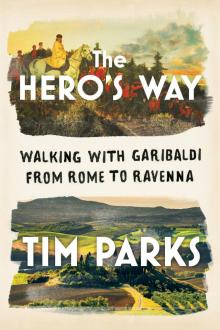 The Hero's Way
The Hero's Way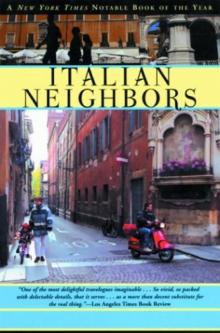 Italian Neighbors
Italian Neighbors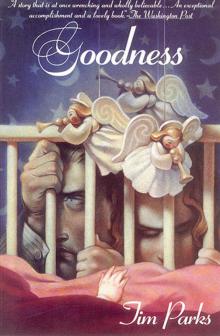 Goodness
Goodness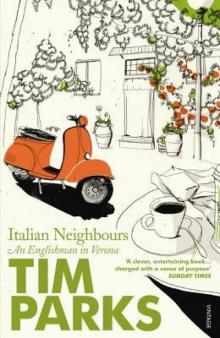 Italian Neighbours_An Englishman in Verona
Italian Neighbours_An Englishman in Verona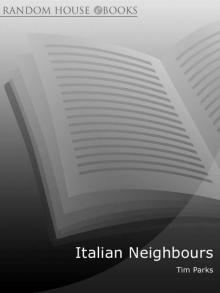 Italian Neighbours
Italian Neighbours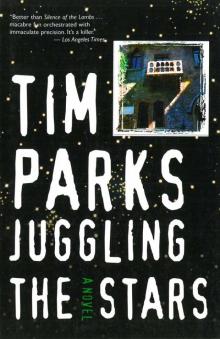 Juggling the Stars
Juggling the Stars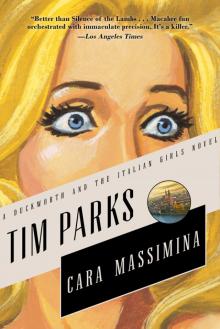 Cara Massimina
Cara Massimina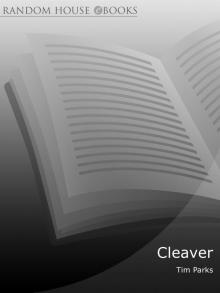 Cleaver
Cleaver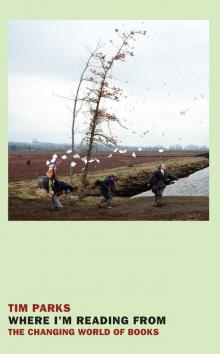 Where I'm Reading From
Where I'm Reading From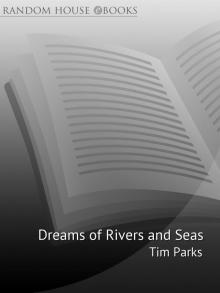 Dreams of Rivers and Seas
Dreams of Rivers and Seas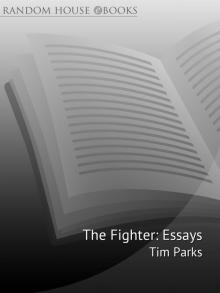 The Fighter
The Fighter In Extremis
In Extremis Painting Death
Painting Death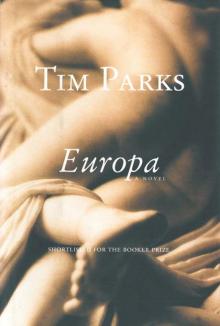 Europa
Europa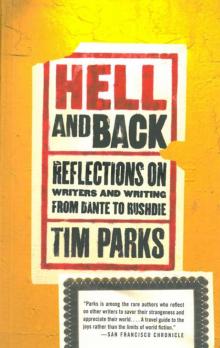 Hell and Back
Hell and Back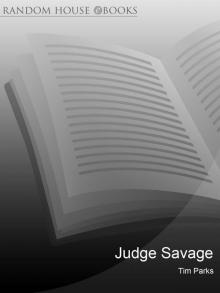 Judge Savage
Judge Savage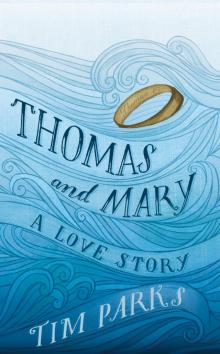 Thomas and Mary
Thomas and Mary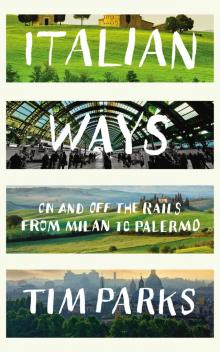 Italian Ways
Italian Ways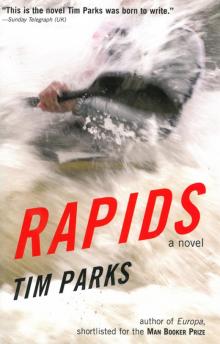 Rapids
Rapids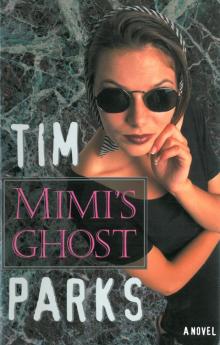 Mimi's Ghost
Mimi's Ghost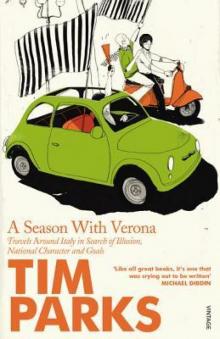 A Season With Verona
A Season With Verona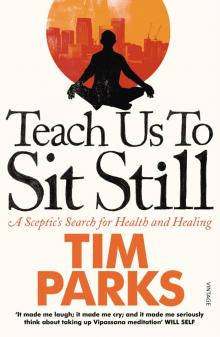 Teach Us to Sit Still
Teach Us to Sit Still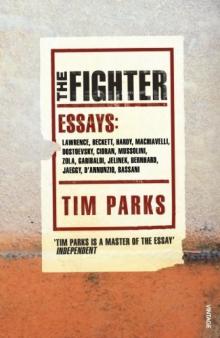 The Fighter_Literary Essays
The Fighter_Literary Essays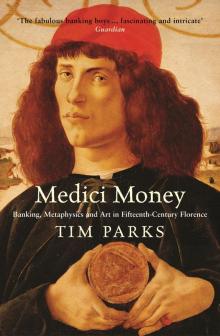 Medici Money
Medici Money